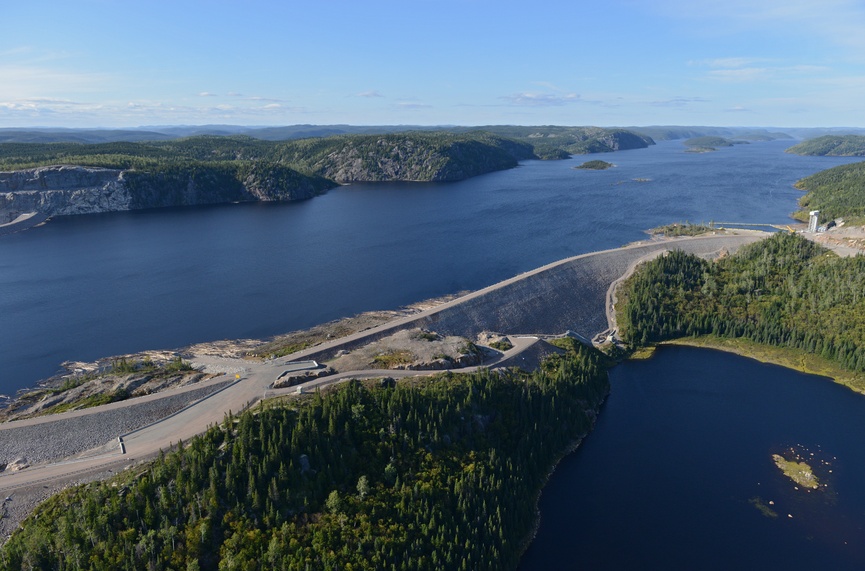Montréal, March 9, 2015
Press Release
Québec hydropower provides multiple benefits to New England in meeting its energy challenges
Hydro-Québec seeks to rectify false information put forward in Paul Doscher’s letter to the Concord Monitor entitled “There are good things to say about hydropower, but you can’t call it green”, published on March 4, 2015.
Mr. Doscher correctly points out that hydropower is clean, renewable and has among the lowest greenhouse gas emissions of any electricity source available. In fact, emissions from Québec hydropower, calculated using life-cycle assessment, are
- similar to those from wind power;
- only a quarter of those from photovoltaic solar facilities;
- 40 times less than those from gas-fired power plants.
Over the last five years, thanks to Hydro-Québec’s net electricity exports, over 62 million metric tons of GHGs emissions in North America were avoided. That’s the equivalent of the annual emissions from about 15.5 million vehicles.
Hydropower projects in Québec: developed with respect for the environment and for local communities
Unfortunately, Mr. Doscher makes numerous misleading statements about how hydropower is developed in Québec. The majority of Québec’s hydropower generation is located in boreal regions that have different geographical and geological characteristics than regions further south.
The facts about how Hydro-Québec develops its generation projects are as follows:
- Hydropower generation produces none of the pollutants responsible for acid rain and smog. All the water used to generate electricity flows back into the river, with no loss in quality.
- The Atlantic salmon has not been eliminated in Québec’s rivers as a result of hydropower development. Federal law in Canada requires that no habitat for fish species be lost, and provincial legislation in Québec ensures that appropriate measures are put into place to protect and enhance fish populations. Furthermore, Hydro-Québec limits possible impact on fish populations through the careful design of its generation facilities and by modifying water flow rates throughout the year.

- Sediment accumulation is not an issue in rivers harnessed in northern Québec for hydropower generation.
- It is entirely unfounded to assert that thousands of First Nations people have been displaced by Hydro-Québec's projects. Hydro-Québec does everything possible to preserve the various types of land use, promote the pursuit of traditional activities and ensure that Aboriginal people benefit from economic spinoffs of projects. Since 1975, Hydro-Québec has signed over 30 agreements with Aboriginal nations and communities and is a leader among Canadian companies in terms of its extensive relations with Aboriginal communities.
- While it is true that fish mercury levels increase after the creation of a reservoir, this is a well-known and well-managed temporary phenomenon. No cases of mercury poisoning from eating fish have been reported in Québec.
Meeting domestic power demand and supplying export markets
Mr. Doscher alludes to Hydro-Québec’s so-called “dam-building spree”, which he assumes is purely for export to United States markets.
First, Hydro-Québec develops its hydropower projects to meet domestic demand and for export. New projects currently under construction, such as the Romaine complex, are necessary to meet Québec’s peak demand for power in winter, and will serve the needs of export markets as well.
Second, Hydro-Québec’s hydropower projects undergo exhaustive environmental and social studies with a view to develop the best solutions, define measures to prevent, mitigate or compensate for project impacts, and determine which aspects require environmental follow-up. For projects to get the green light, they must be profitable under market conditions, environmentally acceptable and favorably received by local communities.
Not only are the new projects being brought online economically sound, they will provide northeastern North America with clean and reliable power for more than 100 years.
Hydro-Québec is an energy solutions provider for New England
Increasing and securing deliveries of Québec hydropower into New England would benefit the region’s energy consumers in a number of ways:
- Lower wholesale energy prices throughout New England
- Increased diversity of electricity supply and decreased reliance on natural gas, thereby mitigating price volatility in winter
- Assistance with the integration of intermittent supplies of energy (wind and solar for example)
- Contribution to the de-carbonization of existing energy supply
Hydro-Québec has a long history of supporting New England’s energy needs and would like to continue to be part of the solution to the region’s energy challenges.
For more information:
Gary Sutherland
514 289-4418
sutherland.gary@hydro.qc.ca